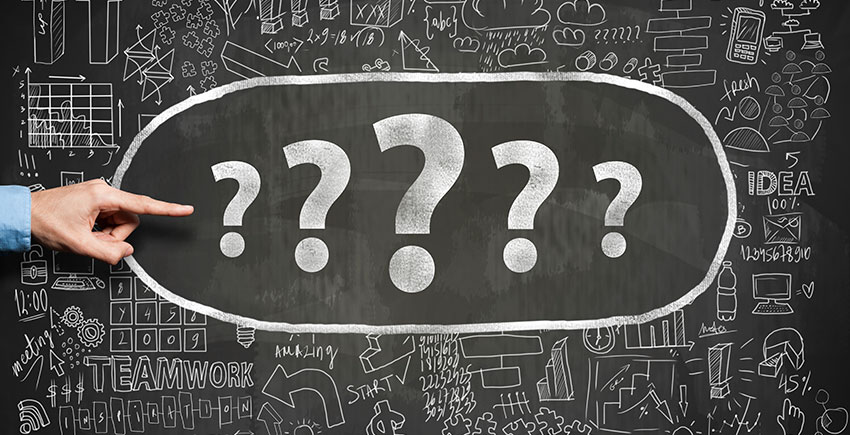How to Improve Your Memory for Remembering Names and Information of People

If there is one reason why people need to improve their memory, it is to remember the names of people they meet. Although many people have a good memory, yet a good number of them seem to struggle with remembering names.
There is a psychological reason for this. When most people meet someone for the first time, they do anything but listen when the person tells them their name. The person being introduced thinks about how they appear in the eyes of the other person, what they should say, etc. Sometimes, they check the other person’s appearance and make a quick judgment about whether they like the person or not. They think about anything but what they hear.
Consequentially, they did not forget the person’s name; they just did not remember it in the first place. They were not paying attention.
When you meet someone, do you think about how you look, what your hands are doing, or whether your shirttail is out and your collar straight? This could stem from the teenage years when you struggled with wanting everyone to like you. Some people outgrow this, but some continue this habitual way of thinking well into their adult life.
The problem with this is that you make a better impression when you think about the other person. You catch their name and more information about them, including their career and marital status. You catch whether they have children or not, their hobbies, and their interests. All this makes a good first impression, but remembering their name makes the best first impression.
So, then, what’s the best way to memorize names? The first step in remembering someone’s name is to pay attention when they introduce themselves. As they talk, continue to pay attention to what they are saying. When you do this, you not only learn a lot about them, but it also increases your chance of saying something back that they will have interest in.
While it may seem like common sense to pay attention, what do you do to make their name stick in your mind? First, I will describe the common less imaginative way, then I will discuss how you can use your imagination.
When you start to speak, address them by name. Saying it yourself will help you remember it. Asking them to repeat it will not seem rude because it will show that you have an interest in getting to know them. Whether you repeat the name or they repeat their name, the more you hear it, the more you will remember.
Most of the people we meet will have a first name like someone we know. If you meet a John or Mary, you could imagine them standing next to someone else you know named John or Mary.
Last names can be trickier. Unless it is Smith or Jones, you may need to create a picture association to remember the full name. This leads to the technique to remember someone’s name using your imagination.
When someone introduces him/herself to you, pick a feature of theirs that you could create a picture of. Then create a picture of the person’s name. Step three is to connect the pictures.
Here’s an easy example: Suppose you met a man named Robert Burns. He has red hair, and he is a fireman. So, you look at his red hair and imagine it is a house burning down. Then imagine a crooked-looking man running out of the house with some money. He is the robber (Robert) who set it on fire.
Now, he tells you that his wife is named Sherry. Think of a lady pouring drinks for the people whose house it is as a consolation.
Next, he tells you that he has two young sons named Pat and Jake. You can use rhyming for this one. Think of two young boys watching the fire and following the drink lady around. One carries a cat (Pat), and the other carries a snake (Jake).
Now, the next time you meet Robert Burns, you will be able to say, “Hi, Robert! Have you had any interesting fires lately? How’s Sherry?” After he tells you, then you ask, “How’s Pat? How’s Jake”?
Some of you might think that this is a lot to think about. Would it not be easier to just say the information over and over (rote memory)? It might seem that way, but the facts will stick in your memory longer if you make the associations.
This example was easy because the man’s name and appearance led easily to his information. Sometimes, that will be easy, but you still have to make the associations for it to stick.
Sometimes, the name and information will be easy; sometimes not. For example, years ago, I knew a man who was Mr. Les Trash, and he was a sanitation engineer (in those days, we called them the janitor) in a school. This was another easy association.
So, what do you do with the name, appearance, and information? You create pictures that make the association for you!
Let’s try some examples. You meet a woman whose name is Betty Shields; she is an addiction counselor. You notice that she has a big nose.
I need to make two points here: One, when you pick a feature on the person, pick something permanent. For example, don’t use an item of clothing that they wear. For obvious reasons, the next time you encounter them, they could wear something different. Also, do not tell them that you are using a feature such as their big nose to remember their name. If you do that, you might get a big swollen nose when they punch you. They never need to know!
Now, you meet Betty Shields. You see her big nose and the decorations inside the
shield. On one side, you have a roulette wheel, and the other side is a lottery ticket. So, the
shield represents her last name (Shields), and the décor represents her first name (Betty).
You now have her name. You just need to include the fact that she is an addiction
counselor. You reduce the size of the shield to half her nose. It will fit in half. Imagine someone
gambling in the shield. They then cross over to the other side of her nose where there is a room
with a counselor. They get counseling for their gambling addiction.
This example was slightly harder than Robert Burns’. Let’s now take an example of
something that has no obvious picture, and you need to create one. You meet a man named
Tom Healy who has nice facial features and a mop of a head of hair. He is a computer
repairman with a wife, Laurel, and two kids, Tom Jr. and Sue.
Look at his head of hair and imagine it is computer cables. The cat Tom of “Tom and Jerry” is sitting, repairing the cables. One of the cables is growing a heal. Then a little cat comes, which looks like the big one, so he is Tom Junior. He yells out—he is scared because if they do not fix it right, the owner will sue them. Then he sees that the problem is that a laurel bush was sticking out through the floor and had entangled the cables.
You may have already figured out the associations, but if you missed some, here they are:
The cat Tom for Tom. The heal for Healy. The little cat for Tom Junior, and the threat of suing for Sue. The laurel entanglement for Laurel. What is the other one for his job? Right! The hair is
computer cables.
The more you do this, the better you will become at it. If you read the previous articles, you
know that imagination is important in memory, and you probably have taken the time to practice some imagination and linking techniques.
At first, you may be slow coming up with the associations, and you may need to practice.
Here are some ways to develop each skill:
For a couple of days, start noticing features on people you already know. Look at the people
in your family, your friends, coworkers and notice what feature of theirs you would use for the
memory technique.
Then think of the same people, their names, and information about them. Use your
imagination to make connections with their name. Then continue the connection with
information that you already know about them.
When I started using this technique, I practiced this way. Then I expanded by doing it with
people in movies. I picked a feature on the star, then made an association with their real name,
and then another association with the name of the character they played. Then I did it with
baseball players. When you watch baseball on television, you get a good look at the batter’s
face. So, this was easy to do.
After practicing with people I knew and with movie stars, I was able to remember everyone I met—even at parties. When you start, you may want to focus on one at a time. But with repeated practice, I could be at a party or a networking event and remember 20 people or more, their names, and their information.




